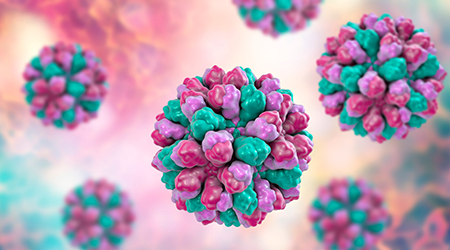
The past year or so has been a sobering reminder of just how delicate life is, has been and always will be. Recent times have also reaffirmed the fact that the greatest threats are sometimes the most diminutive.
One threat that’s tiny in size, but can do massive damage is the pathogenic microorganism. Examples of dangerous pathogenic microorganisms include viruses and bacteria such as influenza, Methicillin-resistant Staphylococcus aureus (MRSA), SARS-CoV-2 (the virus that causes COVID-19) and Clostridioides difficile (C. diff).
Many of the pathogens listed above are similar in that they’ve long caused problems for healthcare facilities, and some have also impacted long-term care facilities, schools and businesses. What these pathogens don’t have in common is disinfectant resistance. What might kill one problem pathogen might hardly phase another. That’s why it’s important that building service contractors develop a greater understanding of the viruses and bacteria that cause their clients issues and how to eradicate them using proper concentrations of disinfectants.
Viruses vs. Bacteria
Before going in for the kill on pathogens, it helps to know exactly what is being targeted and how it is best removed. Viruses can be identified as either enveloped or non-enveloped. Enveloped viruses might be worth discussing first, as they’re what have caused many of the illnesses that have made worldwide headlines in recent years. According to David Trinks, CEO of Trinks Consulting Group in Franklin, Massachusetts, examples of enveloped viruses include SARS, the flu, measles, Ebola, Zika Virus and SARS-CoV-2.
Under close examination, one notices that enveloped viruses are coated by a lipid or fat layer. This exterior coating found on enveloped viruses makes them relatively fragile and rather easy to kill. Harsh disinfectants are not always necessary. In most cases, a two-step cleaning and disinfecting process helps to slow their spread. But many experts also stress the importance of handwashing, because the soaps can penetrate viruses and the act of washing will help remove them from the skin.
“What happens is that the soap forms a micelle that basically pulls the fat lipid apart,” says Trinks.
Non-enveloped viruses haven’t provided as many recent scares, but are responsible for many sporadic everyday outbreaks. Examples of this form of virus include rotavirus and norovirus.
“Cold and flu viruses (influenza) and bacteria are the easiest to kill — most disinfectants should work,” says Charles Gerba, a microbiologist and a professor at the University of Arizona in Tucson. “Noroviruses and viruses that cause hepatitis A and meningitis are tougher to kill. It is important to read chemical labels to be sure the product is effective against the specific pathogen.”
Viruses are just a part of the problem as it relates to dangerous pathogens — bacteria can inflict a whole lot of pain and suffering in unlucky bodies, too. Common examples of bacteria that cause great issues with humans include E. Coli, salmonella, C. diff, and MRSA, the latter two of which are especially prevalent in healthcare and long-term care facilities.
Each of the dangerous bacteria pose challenges to cleaning teams, but C. diff is notoriously the most difficult to kill. It is important that BSCs adhere to chemical concentrations when faced with these pathogens.
Whether it’s a virus or bacteria that’s being targeted, janitorial and custodial staff must rely on proper products and their active ingredients, as well as processes and cleaning programs as they arm themselves for the fight.
Step one, staff must be trained to always clean a surface before applying any sort of disinfectant. Failure to do so usually makes any efforts at disinfecting futile.
Once surfaces are cleaned, disinfectants should be applied to high-touch surfaces and areas where viruses and bacteria might be present.
“Disinfectants are the primary tool to prevent cross-contamination on environmental surfaces as they inactivate or kill dangerous microorganisms when properly used,” says Dr. Hudson Garrett, adjunct assistant professor of medicine, Division of Infectious Diseases, University of Louisville School of Medicine, Louisville, Kentucky. “Modern disinfectants are not toxic and can safely be used, when done so according to the manufacturer’s instructions.”
When choosing the right disinfectant for the job, it’s important to note that bacteria such as C. diff can form resistant endospores, which are difficult to deactivate. In that case, Garrett suggests using a special disinfectant, such as a sporicidal agent.
Experts suggest that cleaning staff always use a disinfectant that the Environmental Protection Agency (EPA) has registered for efficacy against what is being targeted. Not all formulations and concentrations kill the same pathogens, so ensuring a good matchup is always important. In many cases, the disinfectant’s label will say what it is capable of killing.
One of the most important things a person can do when using disinfectant to combat a virus or bacteria is to ensure the proper dwell time is met. Luckily, recommended dwell times are also on the product’s label.
Cleaning Helps Prevent Viral And Bacterial Transmission

 Celebrating BSCAI's 60th Anniversary eBook
Celebrating BSCAI's 60th Anniversary eBook The Down and Dirty on Cleaning in Virus Season
The Down and Dirty on Cleaning in Virus Season How Surfactant Use is Expanding in Commercial Cleaning
How Surfactant Use is Expanding in Commercial Cleaning